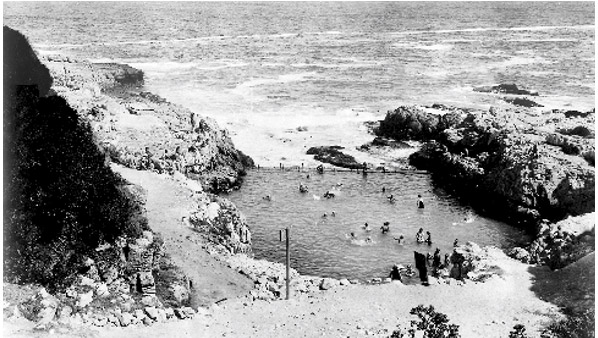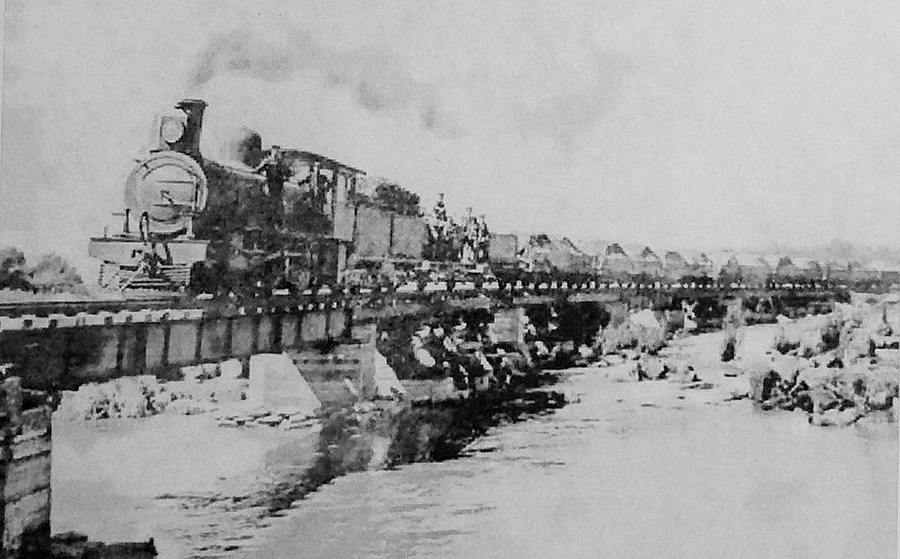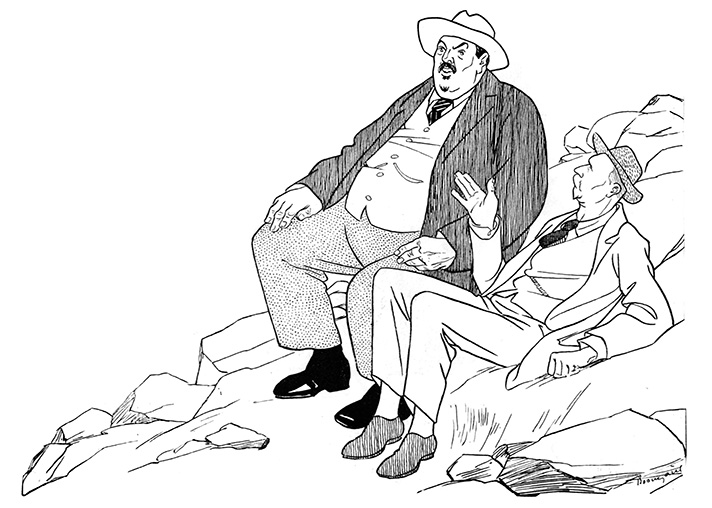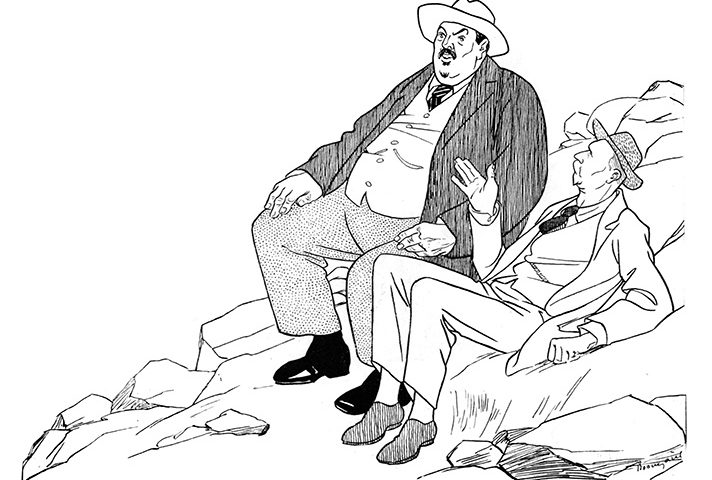
Fick’s Pool: Past, present and future
August 2, 2017
PART III: Sir William Hoy, railways pioneer
August 3, 2017The general(s) and the railways man
After the Anglo-Boer war two leading figures from opposing sides became acquaintances in Hermanus and forged an unusual working relationship. Dr Robin Lee researched the story of railways pioneer William Hoy and General Jan Smuts.
During his long career with railways in Southern Africa, Sir William Hoy’s work was seen as decisive in no fewer than three armed conflicts. On two of the occasions his involvement brought him  into a close working relationship with one of the most famous South Africans, General Jan Smuts. It so happened that both were frequent visitors to Hermanus and doubtless their capacity to work together in military situations was related to their friendship and connection with our town.
into a close working relationship with one of the most famous South Africans, General Jan Smuts. It so happened that both were frequent visitors to Hermanus and doubtless their capacity to work together in military situations was related to their friendship and connection with our town.
Smuts’ connections with Hermanus arise from his sister, Margaretha. In 1896 she joined her husband, Dr. Joshua Hoffman, in building and managing the Sanatorium (later the Windsor Hotel) in Marine Drive. After the end of the Anglo-Boer War, Smuts stayed there on all his frequent visits to Hermanus. He usually swam in Fick’s Pool in the early morning and took a long walk across the village and up North Cliff Mountain in the late afternoon. He may well have accompanied Hoy on walks up the Klipkop, as Hoy’s Koppie was then known.
The Anglo-Boer War (1899-1902)
Railways were a key factor during this War (1899-1902) and control and use of them was a large part of the reason for British success. This was clear to the British Army from the outset and its expert in such matters was immediately brought to South Africa.
He was Major E Percy Girouard who was at the time head of the railways in Egypt. Girouard promptly set up a management structure for military use of the railways, which linked at each level with the civilian structure. From experience he knew that it was critical to keep the economy functioning during hostilities, so that employment could be provided for civilians and materiel produced for the war effort.
Hoy remained on the civilian side of the management structure, but we do know that he accompanied some of the teams repairing damaged track. While we do not know if he saw military action, he was on the scene immediately after it. He did this to get a better understanding of the type of equipment needed to repair damaged track rapidly and for this he felt he needed to be on the scene of some explosions as soon as possible after they had happened.
However, his main task was integrating the civilian and military uses of the railways and in this he was highly successful. A noted railway historian comments as follows:
No greater proof of Colonel Girouard’ s appreciation of civilian help could be adduced than the appointment of Mr. Hoy, of the Cape Government Railways, to be traffic manager of the Imperial Military Railways, and no words can convey an idea of the help rendered by the Cape Government Railway to the military authorities in all emergencies. Whatever requisitions were made “and they were large and constant, often causing great inconvenience to the department”, they were cheerfully given, whether it was in the services of the staff or supplies; military requirements being paramount.
Although Generals Louis Botha and Jan Smuts were on the other side, they were aware of Hoy’s work and both were happy to work with him in the period from the end of the War to Union (1902-1910) and then as Prime Minister and Cabinet Minister after Union in 1910.

Two generals. Genls Louis Botha and Jan Smuts (drawn here by D.C. Boonzaier, cartoonist for De Burger in 1915) enlisted the help of William Hoy during South Africa’s WWI military campaign in German South West Africa.
The German South West Africa Campaign (1914-1915)
Hoy’s first experience of military action had been in the service of the British government. His second was in the service of the South African government, but ironically with precisely with the two generals who had been on the ‘other side’ before.
On Tuesday 4 August 1914 Great Britain declared war on Germany. Three days later, the British Government officially requested South Africa to invade the German colony of “German South West Africa” (GWSA) and destroy the wireless communications stations along the coast, which were a vital part of the German naval activity in the southern Atlantic.
Politically, this was not an easy decision for Prime Minister Louis Botha, as many Afrikaans-speaking citizens still had strong negative attitudes towards the British and there was considerable domestic political risk involved. In fact, the decision precipitated the Rebellion of 1914, led by General Manie Maritz, but, in the event, it was relatively easily managed.
On 21 August 1914 General Jan Smuts chaired a meeting to plan the invasion. Those present comprised exclusively Smuts, his four army generals and William Hoy, at that time General Manager of the SAR. Hoy left the meeting with the seemingly impossible task of constructing 250 km of railway line across virgin territory, in difficult desert conditions, but also requiring a bridge over the Orange River, while harassed by ‘rebellie’ commandos, within as short a time as possible.
Hoy employed both traditional and innovative techniques. He started by selecting the best professional for each aspect of the task, for instance Arthur Tippett, Engineer-in-Chief for the SAR.
He created what we would call a ‘just in time’ process of delivery of materials, long before the Japanese claimed it. As each shift laying track went on duty their material arrived, but did not block the railway waiting for the shift to start.
He encouraged and authorised innovative methods, such as laying rails straight onto the desert surface whenever possible and filling in between and around the sleepers at a later stage, once the most urgent trains of troops and munitions had passed. He also devised a set of electric lights on a truck on the rails to allow working at night.
In 1916, the Rand Daily Mail commented: “That Sir William Hoy well deserved the knighthood that has been conferred on him will be admitted by all who have any idea of the immense of work which fell to the lot of the Railway Authorities in this country in the past sixteen months.”
General Botha, as Commander-in-Chief sent a telegram: “General Botha telegraphs appreciating excellent services and sends congratulations on success attained railway construction.”
But possibly his greatest success during this time was a campaign he managed personally. Hoy was faced with persistent shortages of iron and other metals and could not afford to wait for supplies from Britain. So, he issued orders to all Railway employees to collect any material that might be used in making new rails and to send this to De Aar for sorting, repair and re-use in the GWSA initiative.
There was a massive response to this communication, and to others Hoy sent out personally. Eventually 152 miles of rails, 360 000 sleepers and 459 sets of points were sent in. A beneficial side effect was a universal clearing up of all lines and depots on a scale beyond anything previously attempted.
The Rand Revolt of 1922
Hoy showed his adherence to Smuts during this episode of labour unrest. Sharp differences between the owners of mines and the largely European and mostly British workforce created a showdown of almost military proportions.
Smuts (then Prime Minister) took personal command of the situation and decided that force had to be used. He mobilised the military forces in Johannesburg, used artillery and even ordered the Air Force to bomb areas of the city held by the miners. However, the situation still could have got out of hand if Hoy had not re-organised the entire railway schedule to assemble and run several trains of reinforcements from Durban.
Next week: Sir William Hoy and the electrification of South African railroads.
<pull quote>In 1914 Hoy was given the seemingly impossible task of constructing a bridge over the Orange River and laying 250 km of railway line across virgin territory in German South West Africa, in difficult desert conditions, while harassed by ‘rebellie’ commandos.
Sir William Hoy (1868-1930)
Hoy’s Koppie. Klipkoppie, in the centre of Hermanus, was renamed Hoy’s Koppie after Sir William Hoy and his wife, Gertrude, were buried on the summit.
Two generals. Genls Louis Botha and Jan Smuts (drawn here by D.C. Boonzaier, cartoonist for De Burger in 1915) enlisted the help of William Hoy during South Africa’s WWI military campaign in German South West Africa.
Date: 03 August 2017

